Harvesting Season For Broccoli Can Start From April – ‘Better A Week Too Early Than Late’

VEGETABLES > BROCCOLI > HARVESTING
Reviewed By DAN ORI

Dan has over 27 years’ under his belt caring for plants and gardens. Working as a Horticultural Instructor and Consultant, he draws on a diverse range of experience that includes working as a Head Gardener, Tree Surgeon, Garden Centre Trouble Shooter, and writer of academic papers. Dan has a Level 3 Diploma in Horticulture and is currently a candidate for the RHS’s most prestigious award – The Master of Horticulture.
Contributions From EMILY CUPIT

Emily is a Gardening Writer, Photographer and Videographer from Derbyshire, UK. She is the Founder of Emily's Green Diary - a community of more than 75,000 people who share in her gardening journey.
BROCCOLI GUIDES
Eating After Flowering
Feeding
Growing From Seed
Harvesting
Preventing Bolting
Problems
Broccoli – that food that your parents made you eat and you’ve now grown to like – is a great plant to grow in your garden.
However, it’s only if you ‘treat it right’ after harvesting that broccoli will deliver that super tasty knockout punch.
We lay out how, underneath.
When To Harvest
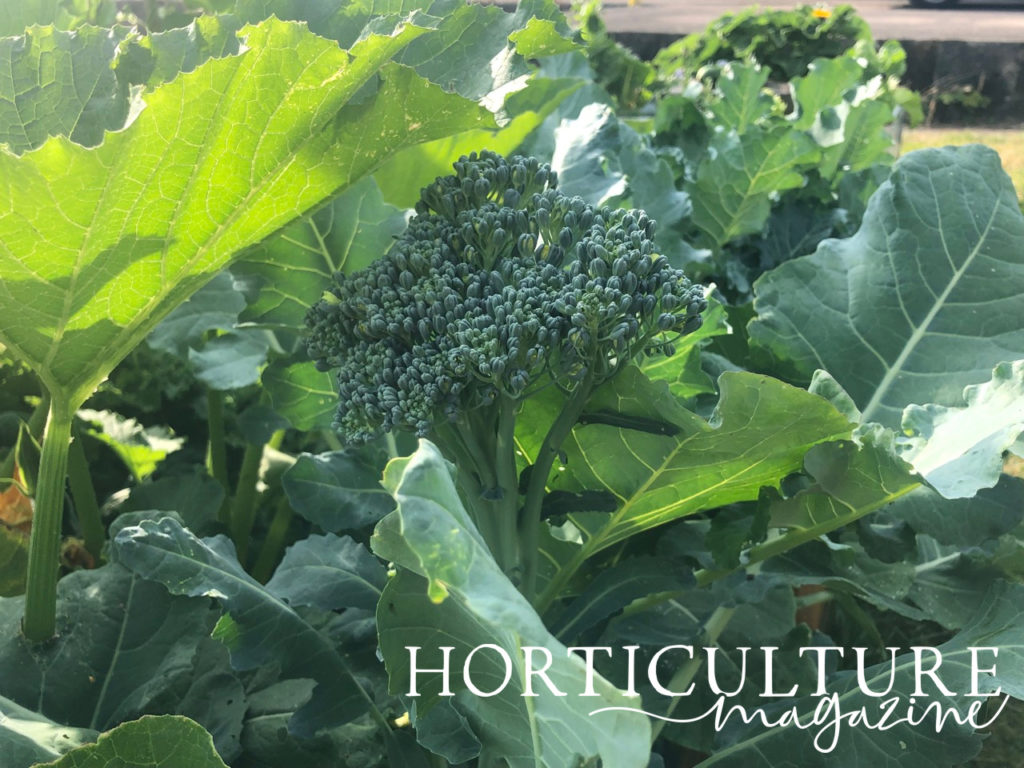
Broccoli varieties mature and are ready for harvest within a fairly narrow timeframe, which is usually from 8-12 weeks.
The best sowing and growing season for broccoli means that peak harvesting season is July through to September.
However, this harvesting season can run all the way from April through October depending on your region’s climate, the cultivar you are growing, and whether you start the seeds indoors.
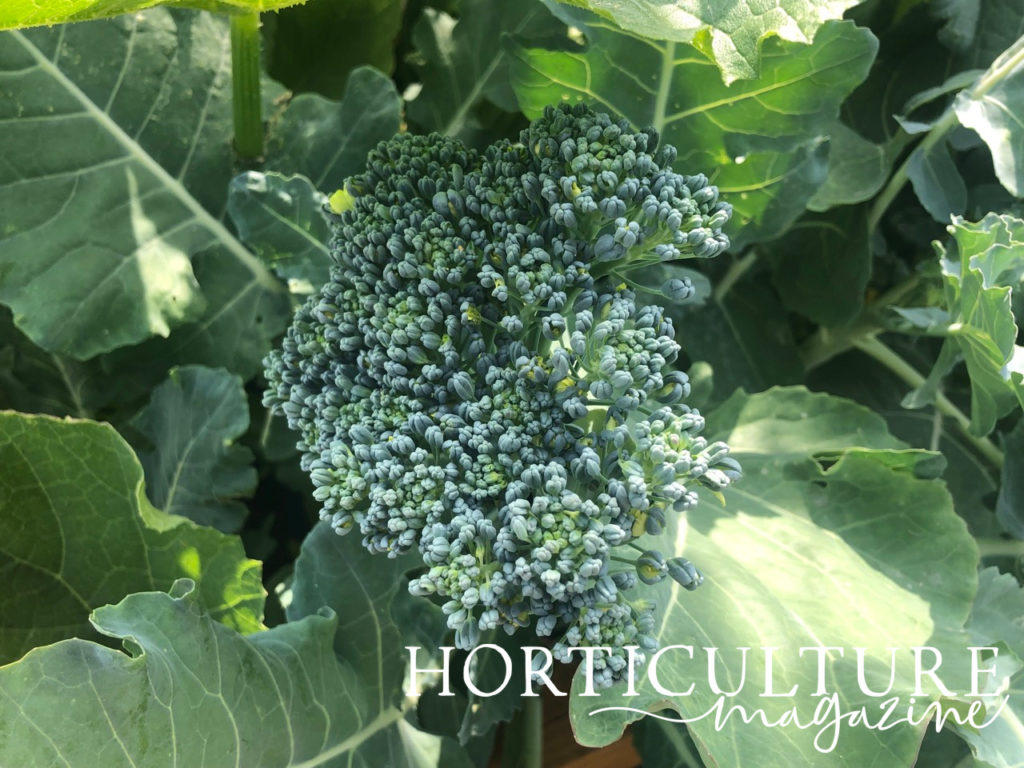
As your broccoli plants are coming along, you want to reap a bountiful harvest.
So be on the watch-out for birds, slugs and snails, any of whom can put paid to your crop.
Consider protecting your broccoli patch with bird netting.
As the time to maturity approaches for your broccoli variety, keep a careful eye on your plants.
It is better to harvest a week too early than a week too late.
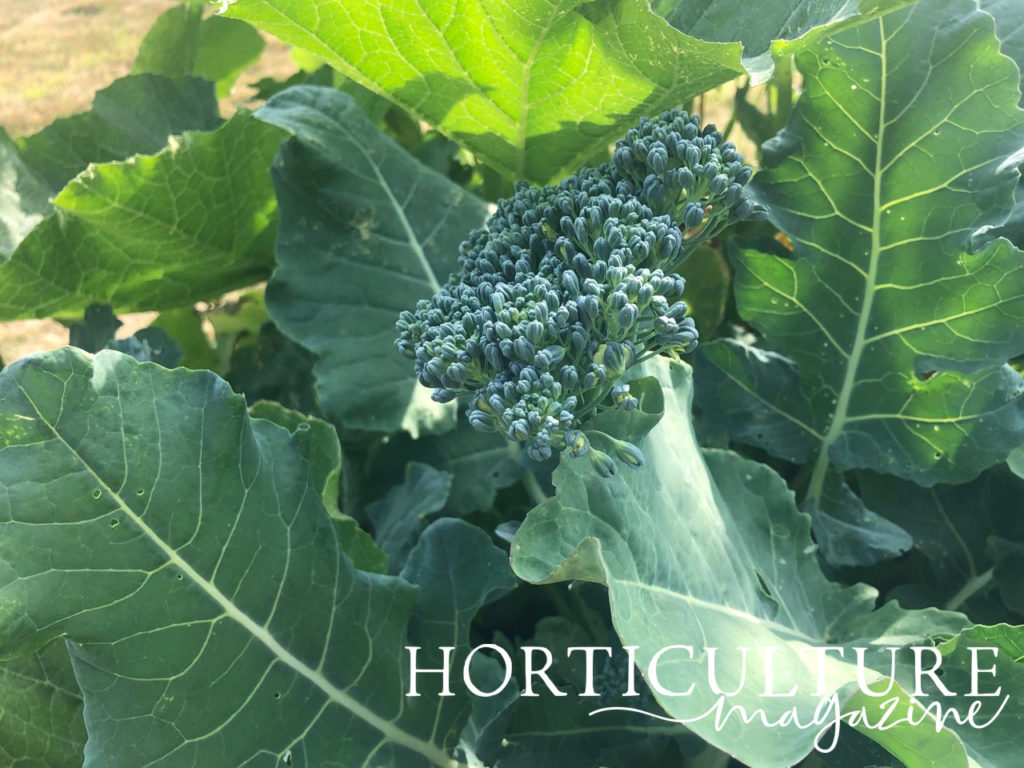
When the main (upper) heads are firm and well-formed, each one showing those familiar little knobs, it is time to harvest.
For most cultivars, the size should be a bit bigger than a cricket ball and the colour should be a rich, deep shade of green.
If you wait too long, broccoli can bolt and in warmer regions or during a heat wave the chances of bolting are greater.
You can forestall bolting by providing afternoon shade and by not letting the soil dry out.
The sign of yellow on a head means that that plant has started to bolt.
If a plant bolts, cut off that stalk and harvest the rest of the plants.
| Difficulty | Easy |
| Equipment Required | Gardening gloves, secateurs or scissors (optional) |
| When To Harvest | 8 to 12 weeks to main harvest depending on variety; peak harvesting July through September; extended harvesting April through October |
1) The First Harvest
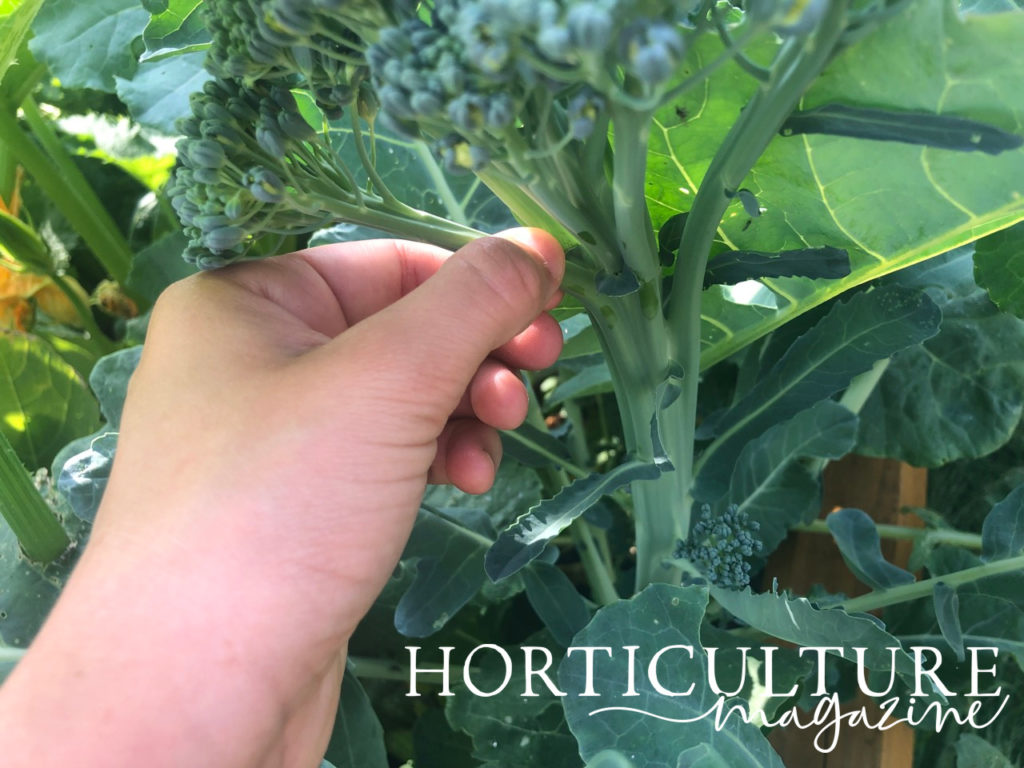
Harvest broccoli in the early morning to mid-morning.
Use secateurs or a sharp knife, whichever suits you better.
On each plant, cut the upper, main head with its stalk down to about 12cm without disturbing the rest of the plant.
Do not cut horizontally; cut at a slant.
A slanted surface means water cannot pool on top of the stalk and bring about stem rot.
2) The Second Harvest

Continue watering and feeding the plants as you were.
Monitor the side stalks now for your second ‘side’ harvest.
These side heads will not become as large as the main, upper heads; when they are 50-75% of the size of the main heads that you had harvested, they are good to go.
Because the smaller side heads will mature at different rates, this second harvest can be taken progressively, on an as-needed basis.
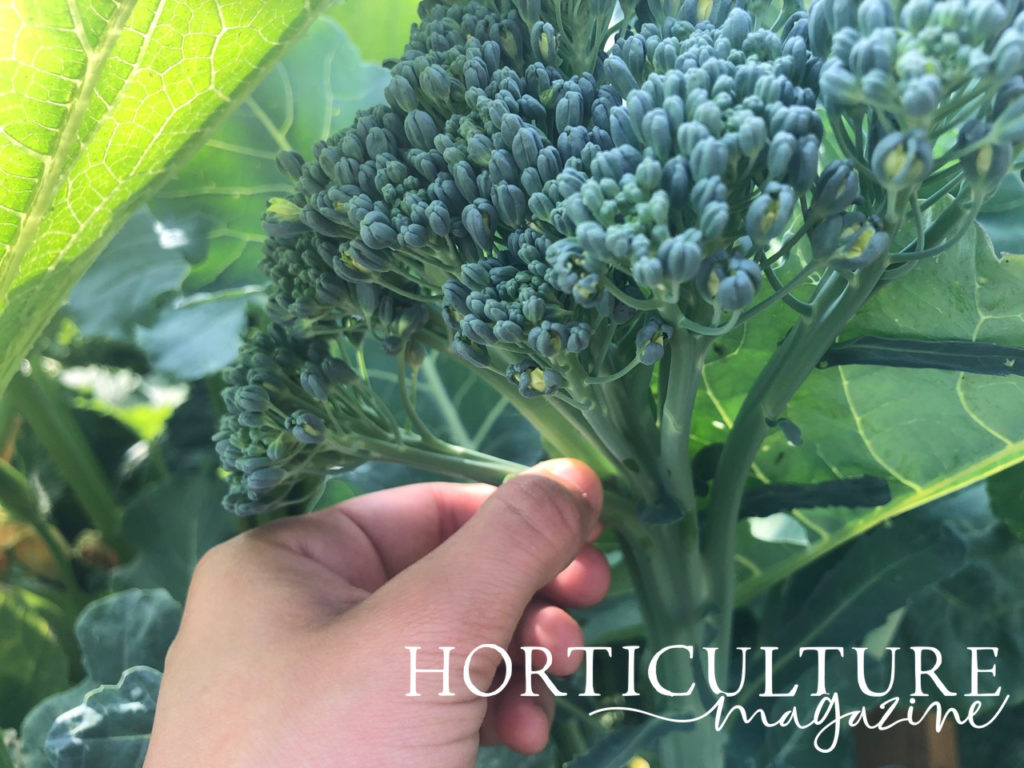
The timeframe is from three to five weeks from the day you took the earlier, main harvest.
If in doubt, simply take this side harvest four weeks from the first one. This time around you can cut each head with most of its stalk.
As before, be watchful for bolting.
3) Washing And Storage
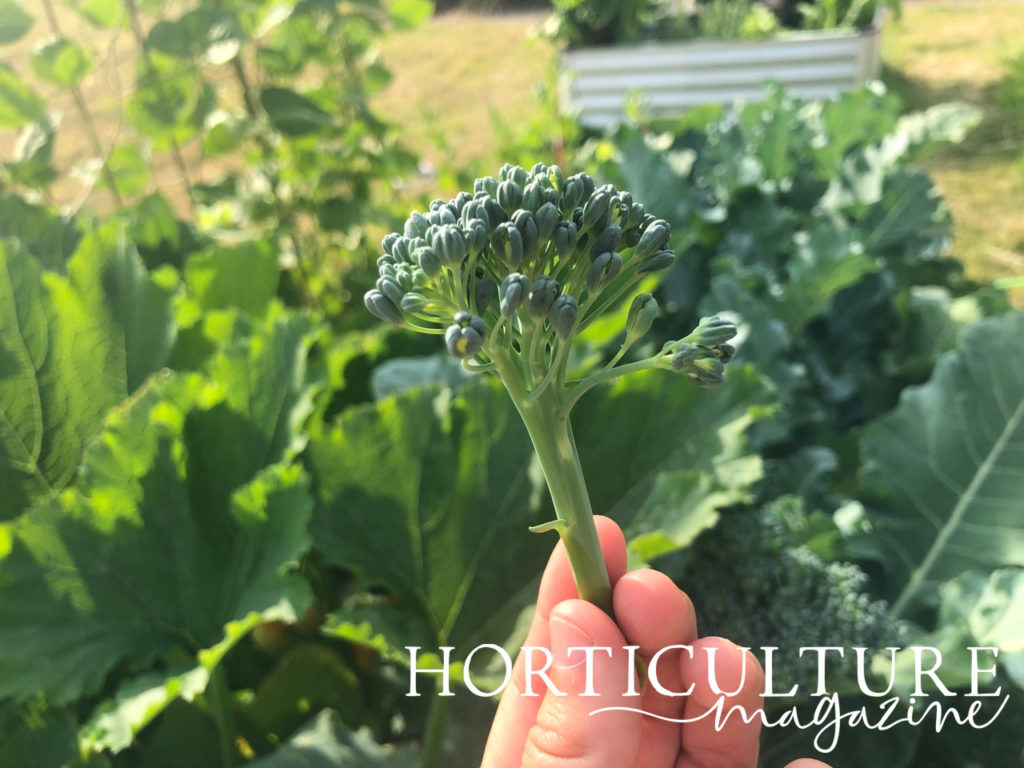
If you plan to store your broccoli for a few days, do not wash it – just put it in a perforated polythene bag, squeeze out all the air from it, and put that in the fridge’s crisper.
It should be enjoyed in three days.
If you plan to store your broccoli for longer, this is one veggie that is amenable to freezing for up to several months, provided it is prepped correctly.
You will first need to clean it, as described below.
Then it needs to be cut into small pieces, and blanched and flash-chilled.
Yes, that’s a specialised method and it’s easier said than done.
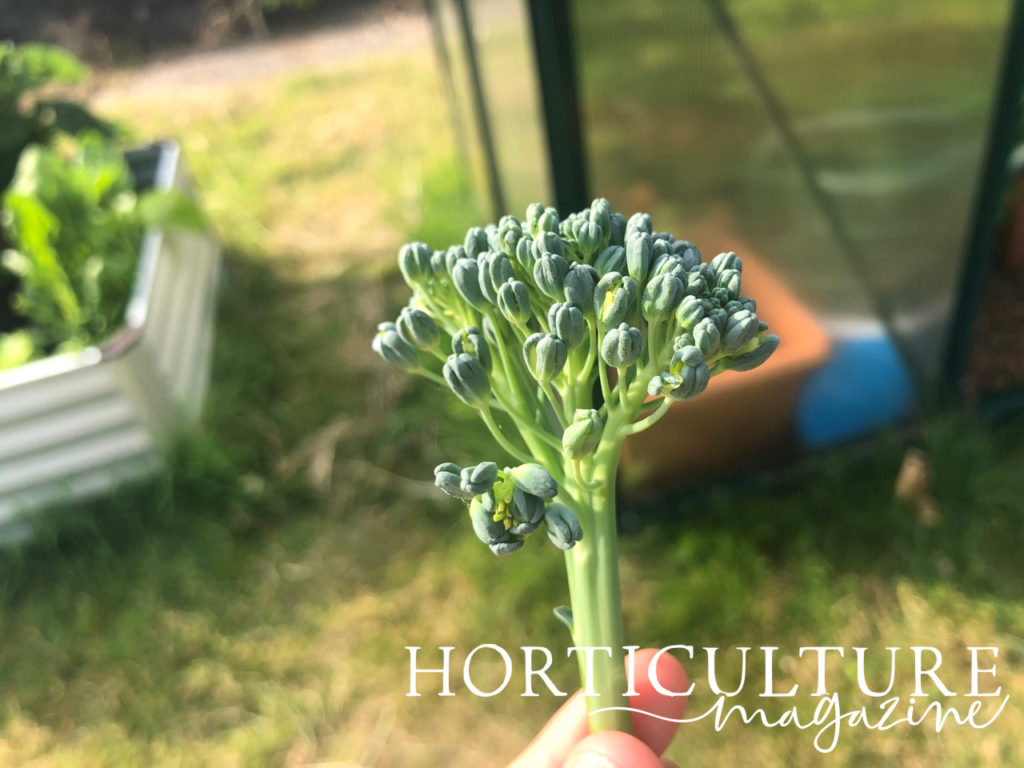
As for washing this veggie, small insects and other germs may be hidden between the florets and in the crevices.
If you are fully confident that your garden does not harbour such pests, you could wash the veggies for five minutes by putting them in a colander while holding it under running water and swishing the veggies.
Otherwise put lukewarm water in a container and add apple cider vinegar or potassium permanganate as appropriate to the amount of water, and mix.
Put the broccoli in this solution for 10-15 minutes, and periodically swish it around.
After you remove it, wash it under cold running water.

